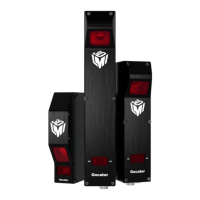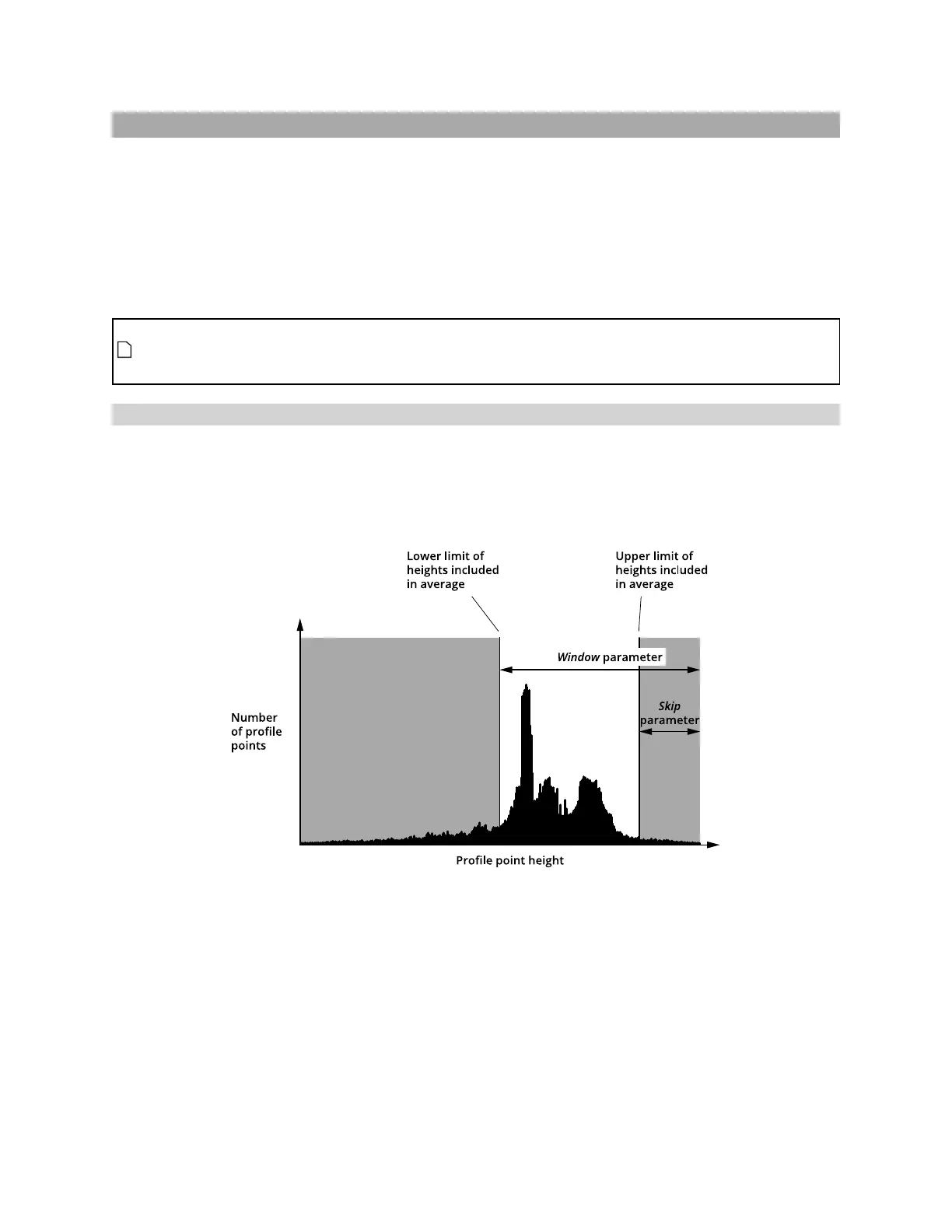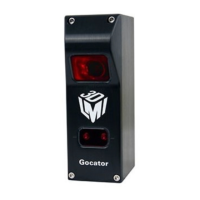Gocator Line Profile Sensors: User Manual
Gocator Web Interface • 232
Bridge Value
The Bridge Value tool calculates the "bridge value" and angle of a scanned surface. A bridge value is a
single, processed range that is an average of a laser line profile that has been filtered to exclude user-
definable portions of highs and lows in the profile. The resulting value represents a "roughness
calculation." A bridge value is typically used to measure road roughness, but can be used to measure the
roughness of any target.
The tool provides two additional measurements (Window and StdDev) that can help determine whether
the scanned data is valid; for more information, see Measurements on the next page.
The Bridge value tool is only available when Uniform Spacing (in the Scan Mode panel on the
Scan page)is unchecked, as the tool only works with unresampled data. For more information,
see Resampled Data and Point Cloud Data on page 63.
Understanding the Window and Skip Settings
The Bridge Value tool measurements work on a histogram of the ranges that make up the profile. The
Window and Skip parameters together determine what segment of the heights in the histogram is used
to calculate the bridge value. The following diagram illustrates the portion of the points of a histogram
that would be included for calculating the bridge value, where Window is roughly 85%of the total points
of the histogram, and Skip is roughly 15% of the points.
Profile point heights in the white area are included in the calculation of the average. Profile point heights
in the grey area are excluded. By adjusting the Window and Skip parameters, you can exclude profile
point heights that correspond to unwanted features on the target. In road roughness applications, for
example, you could exclude rocks (profile points higher than the road surface), cracks or tining valleys
(profile points lower than the road surface), and so on, to get an accurate representation of the tire-to-
road interface.
For more information on parameters, see the Parameters table below.

